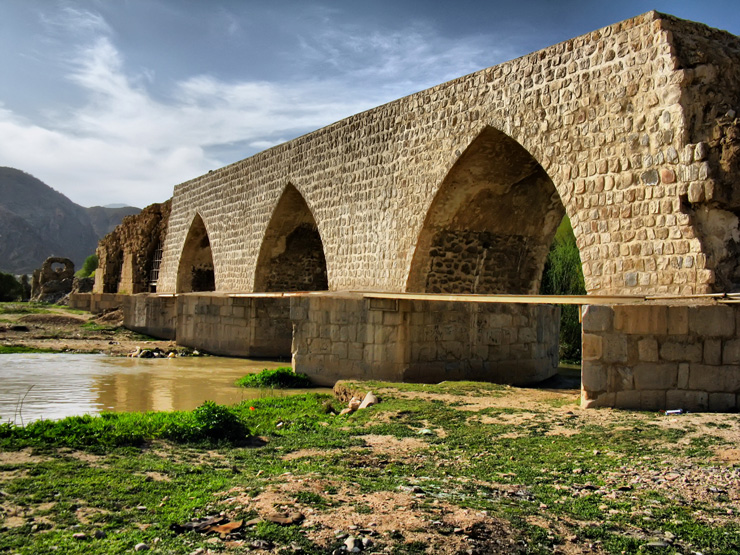Shapouri Bridge: a witness of Iran’s history and architecture
Shapuri Bridge, which is also known as Broken Bridge, is one of the most magnificent historical bridges in Iran, which is located in Khorram Abad city and on the south side of Flak-A-Flak Castle. This bridge, which is a relic of the Sassanid period, shows the greatness and splendor of Iran’s architecture in that period.
Bridge specifications:
The length of Shapuri bridge at the time of construction was about 330 meters and its width was 8 meters.
The bridge used to have 28 gable arch springs, of which only 5 are left now.
The main material used in the construction of the bridge is stone, and Saroj mortar is used for greater strength.
Shapuri bridge was built on Khorramroud river and is currently used as one of the crossings.
History:
The construction date of Shapuri bridge goes back to the Sassanid period and the rule of Shapur I (241 to 272 AD).
Some believe that the purpose of building this bridge was to create a communication route between Tarhan (Lorestan) and Susa and Tisfon (Sasanian capital).
Shapuri Bridge has been restored many times throughout history. The most important restoration was done during the Safavid period and by the order of Shah Safi.
In 1354, Shapouri Bridge was registered in the list of national works of Iran.
Architecture:
Shapuri Bridge is an example of magnificent Sasanian architecture.
The bridge arches show its strength and beauty.
The foundations of the bridge are designed in such a way that they increase its resistance against the floods of the Khorramroud River.
Shapuri Bridge has breakwaters that protect it from water flow.


